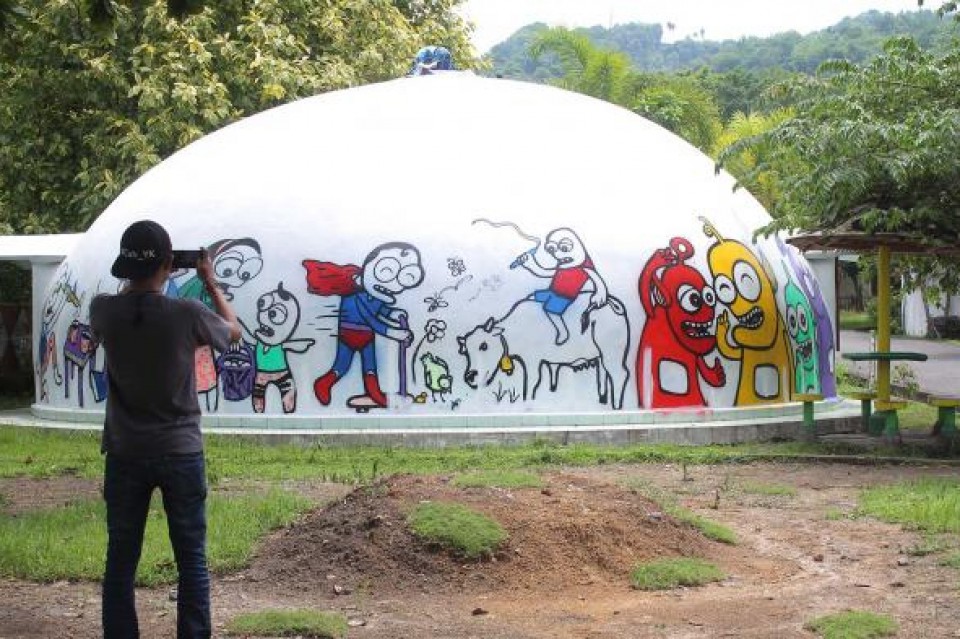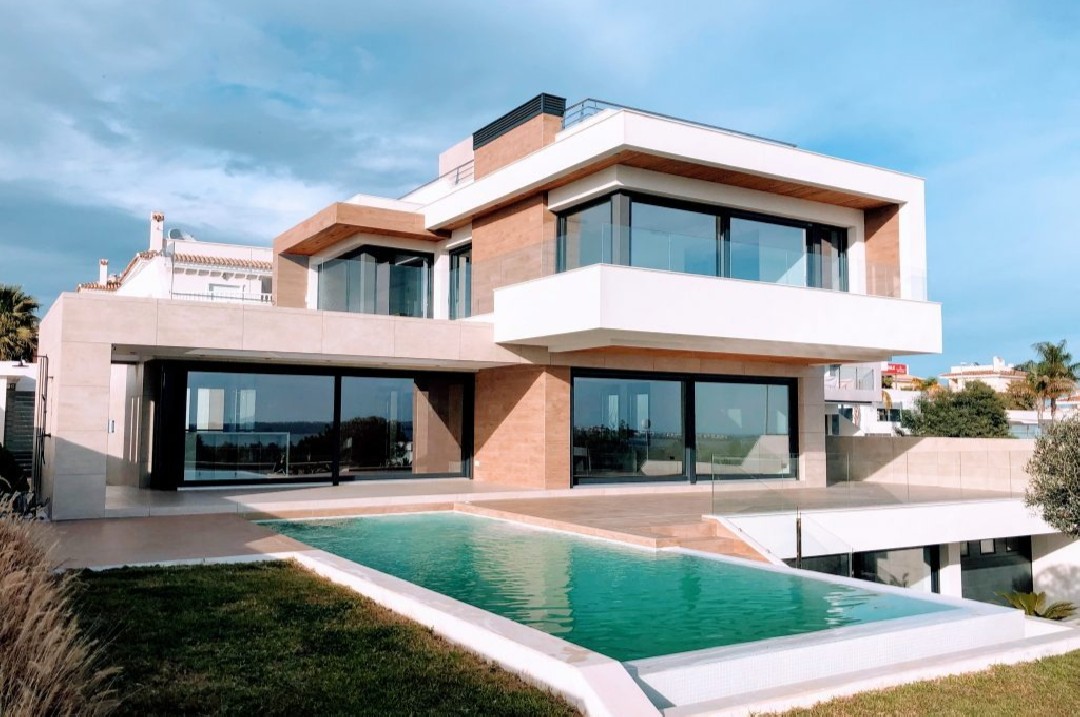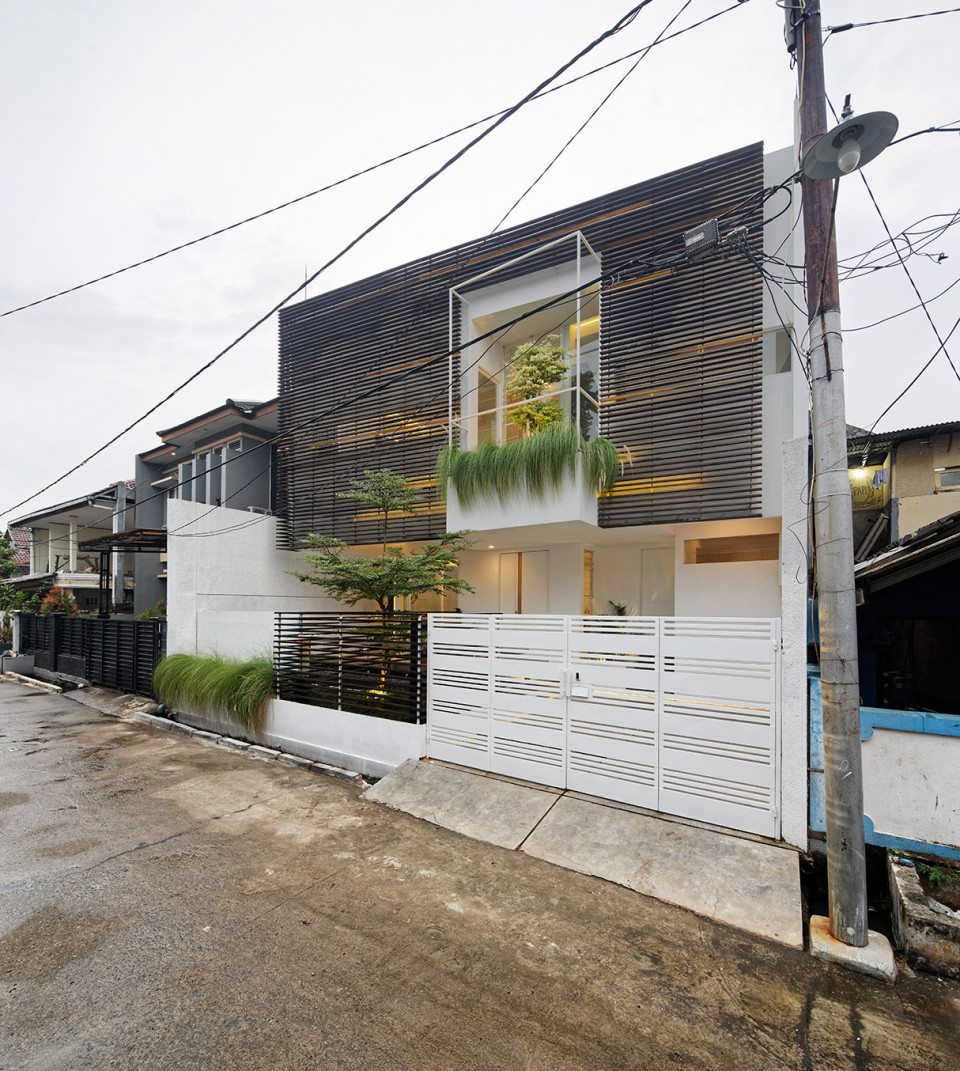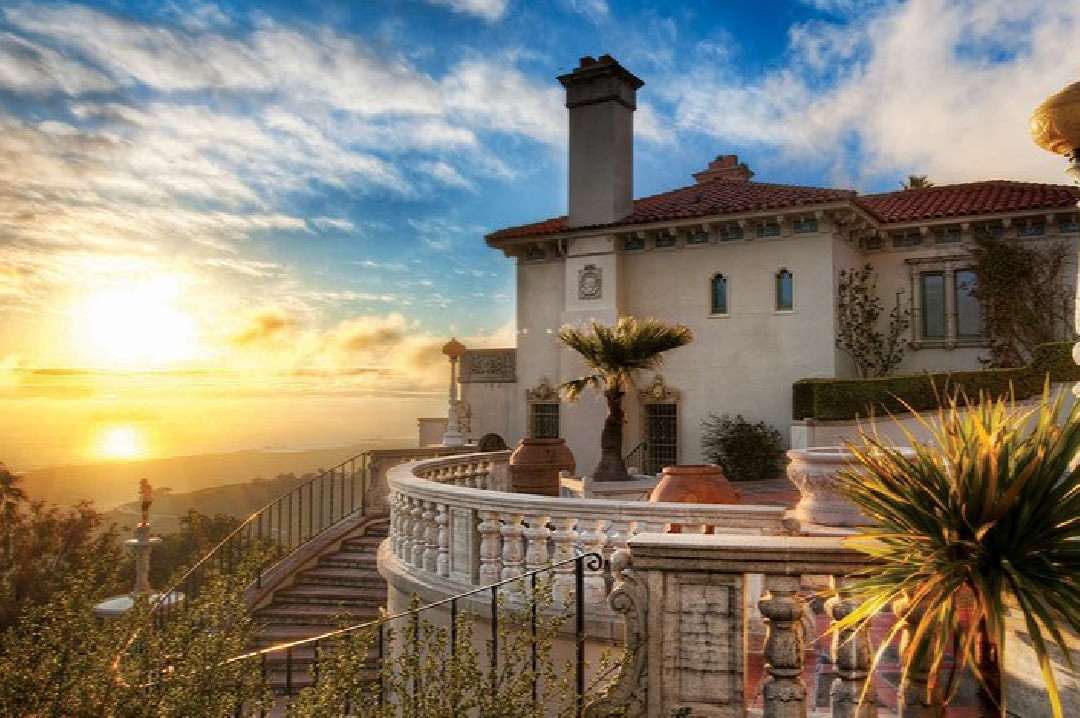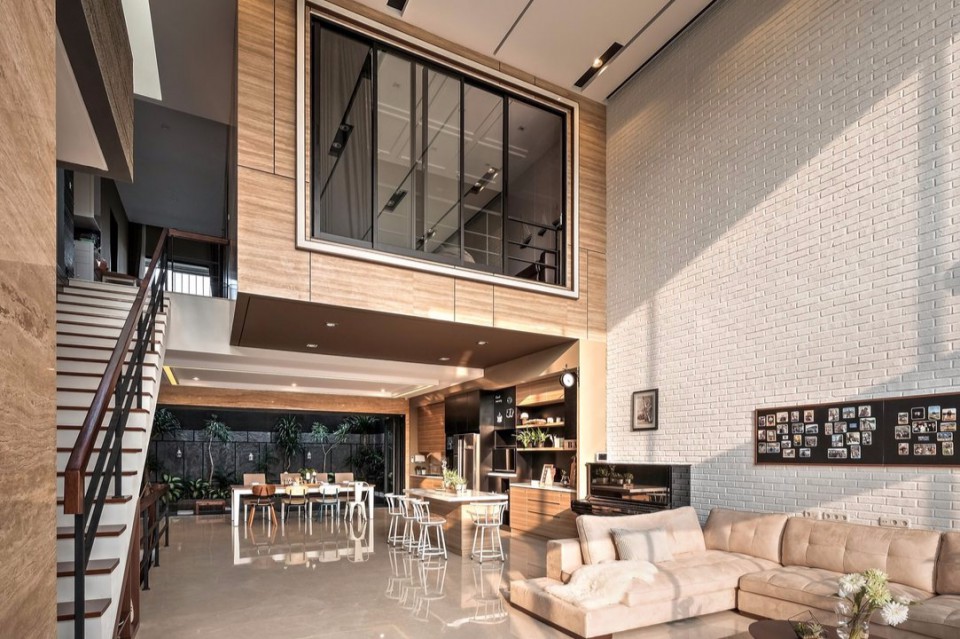Rumah O: A Slender, Transparent, and All-White Tower-like Home Integrating with the Urban Landscape by Hideyuki Nakayama

Japan never ceases to present its uniqueness, and the O House is a prime example. Designed by Hideyuki Nakayama in 2009, this unique and straightforward home is situated in Kyoto, a city known for its rich cultural heritage. The house sits on a land area of approximately 59.71 square meters.

The O House features a slender design with a two-story height that appears monumental. It is divided into several forms: the main tall building mass and other smaller supporting building masses. Its curved shape adds to its uniqueness. The front facade of the building is transparent, with long curtains revealing the bright, white interior.

In the main mass, the central area functions as a corridor and serves as the lobby. Other main rooms are located in the smaller building masses. The lobby corridor is the main access point to various doorways leading to other rooms. The ground floor of the house consists of a lobby or living room, a bathroom with a bathtub, a dining area, a kitchen, and various gardens to the south, west, and north of the building. The upper floor functions as the bedroom.

The abundance of gardens around the house blends it seamlessly with its surroundings, creating a sense of unity with nature. Walking inside the house, in both the front and back, provides a natural experience. From the outside, neighbors can see different aspects of the house's massing from various angles, each presenting a unique impression.
The house can resemble a tower or even a palace when viewed from certain angles. Despite its slim massing, it accommodates various activities inside. Aside from its slender shape, another unique aspect is the curved building masses.

A spiral staircase to the second floor is located in the kitchen area, adjacent to the garden at the rear of the house. The second floor, dedicated to rest and relaxation, features a simple interior. It includes a mezzanine bedroom accessed via the second-floor staircase.

Inside the house, the curved massing is evident, combined with diagonal floor patterns, which contrasts with the exterior's fragmented appearance. While the external massing appears separate, the interior spaces blend seamlessly, creating continuity between rooms in different masses. The connections between rooms and the coherence of the furniture inside contribute to the overall harmony of the house.

The gable-shaped roof with its transparent glass enclosure resembles an open dollhouse that can be seen from the outside. However, the architect did not intend to showcase the everyday life inside the house or vice versa.

The architect aimed to present life inside the house by revealing its surroundings and the condition of the land, a perspective not typically offered by other residences. The goal was to make the home an integral part of the city's visual landscape and its environment, and this was achieved through the transparent exterior design.
sumber: O house


